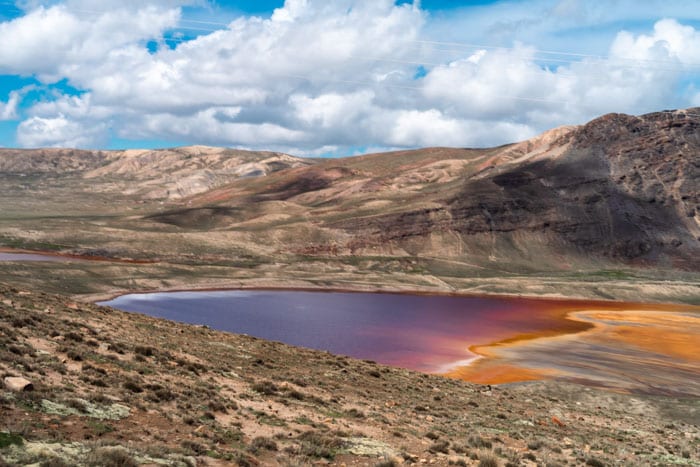One of the world’s biggest mining companies, BHP, is exploring generating carbon credits from its waste products through a process called “carbon mineralization”.
BHP is an Australian multinational mining, metals, and petroleum company that discovered that CO2 was being captured and stored in waste from one of its nickel mining operations.
Australia’s Clean Energy Regulator is now considering the introduction of a new carbon credit offset methodology under the country’s Emissions Reduction Fund.
Carbon Mineralization is not a new concept, but the biggest roadblock to its mass adoption has been the cost-benefit analysis.
Estimates of the gross carbon removal capacity through carbon mineralization range from many trillions to quadrillions of tons of CO2.
A new carbon mineralization carbon credits methodology might unlock additional revenue potential for miners.
What is Carbon Mineralization?
Carbon mineralization is the process that turns CO2 into a solid mineral, such as carbonate. It’s a chemical reaction that occurs when certain rocks get exposed to CO2.
In theory, these rocks can store hundreds of years of human carbon emissions.
The biggest advantage of this method is that CO2 cannot escape back to the atmosphere as it turns to stone. As a result, it offers a permanent carbon capture and storage solution for entities looking to offset their emissions.
- About 1% of the world’s GHG emissions are captured and stored for good using this method.
There are two main types of carbon mineralization.
- Injecting CO2 into rock formations deep underground.
- Exposing CO2 to broken pieces of rock at the surface like mine tailings.
BHP’s mine tailings and ACCUs.
BHP has been producing magnesium as waste tailings at its Nickel West mine at Mount Keith in Western Australia.
Samantha Langley, the firm’s scientist, found that their waste magnesium was combined with CO2 to form a stable compound. It’s called hydromagnesite, a hydrated magnesium carbonate.
-
A study found that around 80% of the CO2 stored in the Nickel West mine’s hydromagnesite waste had been drawn from the atmosphere. This carbon mineralization can offset about 11% of the mine’s carbon emissions.
The study estimated that the tailings dam at the nickel mine was capturing around 40,000 tonnes of CO2 yearly. And this happens naturally without any action from BHP.
Langley believes that the dam can draw CO2 more than BHP’s iron ore and nickel mining emissions. The mining giant also says that by enhancing CO2 capture of its mine tailings, it can entirely offset its mining operations emissions.
According to Langley,
“Although mineral carbonation is a process that can take thousands of years, we don’t have thousands of years to address the impacts of climate change… It’s an exciting opportunity to see if we can use technology and different tailings management practices to speed up the process, and store away carbon dioxide much faster…”
But if BHP is successful in establishing an offset method for carbon mineralization, it can be eligible to claim Australian Carbon Credit Units (ACCUs) for the CO2 stored in mine tailings.
ACCUs are trading at about $35 per metric ton of CO2. That means BHP can claim up to $1.4 million carbon credits each year. And it can be more if the firm can enhance the tailings dam carbon mineralization process.
Once the framework is in place, it may also help attract more investments in carbon capture of mine tailings.
Scaling Up Carbon Mineralization
The Mineral Carbonation International had also proposed to use a similar process to store CO2 in building materials.
The group also seeks to commercialize the carbon mineralization process for storing CO2 in building materials. These include low carbon cement, concrete, and plasterboard.
- In fact, billions of tons of mining and industrial wastes can provide hundreds of millions of CO2 removal each year. These include wastes from iron, steel, coal, and fertilizer productions.
Some large firms have been applying this carbon capture and storage process already.
For instance, CarbonCure Technologies, a carbon removal tech company, offers solutions that allow concrete producers to use captured CO2 to make low-carbon mixes. The firm’s technology injects captured carbon into fresh concrete, locking up the carbon so it doesn’t return to the air.
Carbin Minerals from the University of British Columbia in Canada is also looking at this process. As one of the Musk-funded XPRIZE winners, this startup optimizes carbon removal in mine tailings via carbon mineralization.
The firm developed proprietary technologies that speed up CO2 mineralization in ultramafic rocks. It has the potential for gigaton-scale capture and storage of CO2.


